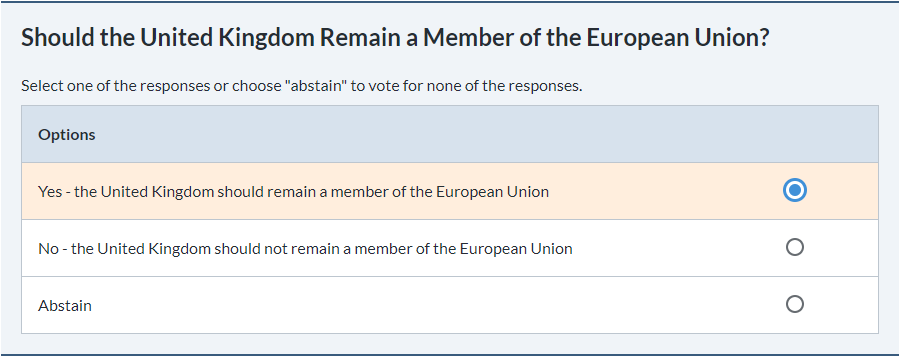What is a Referendum?
A Referendum is an election where voters are asked to make a “Yes” or “No” decision on a proposal. It is possible to have a “multiple choice” Referendum (i.e. where the answers are not just either “Yes” or “No”), but this is less common than the binary form. Contract Ratifications, Bylaw Amendments, and Budget Approvals are specific types of Referendums, but a Referendum can be any proposal to your membership. The result of a Referendum may be the adoption of a new policy or law, or a change to an organization/country’s constitution.
The most well-known examples of Referendums are ones that occur with national governments. However, Referendums are common in some countries, and not so common in others. Switzerland, for example, has conducted over 600 national Referendums. By contrast, in Canada, very few Referendums have ever come up — in fact, there have only been three. Brexit, the decision to leave the European Union by the United Kingdom, is a recent example of a Referendum at a national level. In the United States, Referendums are not held at a federal level because the United States Constitution does not allow for them; however, Referendums may be held at the state level.
A very closely related type of election is known as a plebiscite. The plebiscite is essentially the same as a Referendum; however, there is a major difference. A Referendum is used to change constitutions or legislation (or any sort of other written rules). Taking action after the results of a plebiscite is optional. Because of this, plebiscites are sometimes referred to as “advisory referendums” — ultimately, the results of the plebiscite may not cause a change, but can imply that a change is desired by the electorate.
Possible Voting Methods for a Referendum

ElectionBuddy has a voting method called plurality that works very well for Referendums. Simply set it up as a question with one vacancy, which only allows voters to choose one of the listed options, and list “Yes” and “No” as the two options. To the right is an example of a Referendum, using the Brexit movement as an example.
Common Ballot Features Used in Referendums
Common features used when building a ballot for a Referendum election include:
- The “Abstain” option, which allows for voters to abstain from voting on the Referendum ballot question.
- The Additional Question Information section, which will allow you to include text relevant to the Referendum, if applicable.
- Asking for comments can be useful if looking to collect feedback or member questions/concerns about the Referendum.